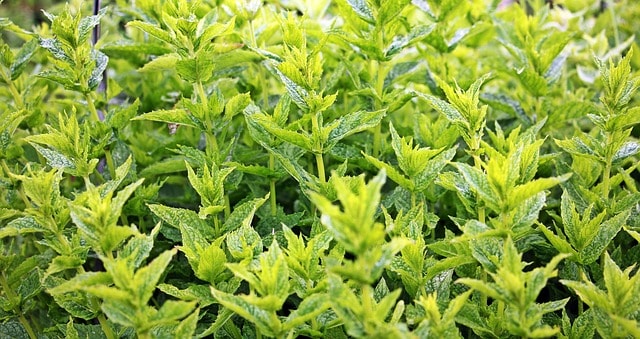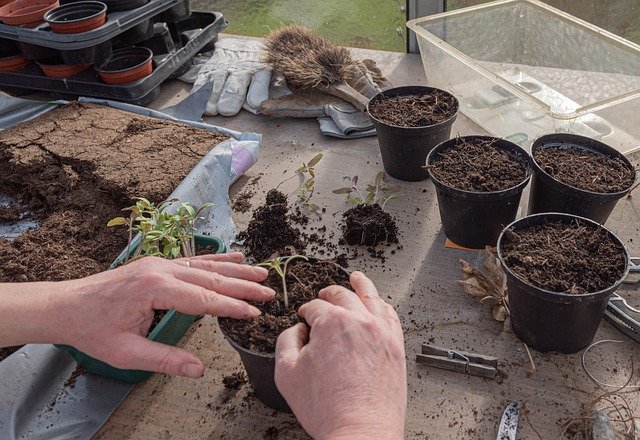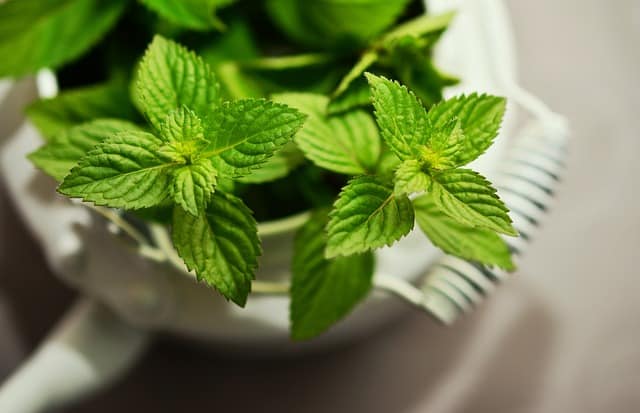Mint plants are a popular herb that is easy to grow and adds a fresh flavor to many dishes. However, it can be frustrating when your mint plant starts to die. There are several reasons behind a dying mint plant, and it is important to identify the problem in order to revive the plant.
Identifying the problem is the first step in reviving a dying mint plant. A common cause of mint plant death is overwatering or underwatering, which can lead to root rot or dehydration.
Other causes include poor soil quality, lack of nutrients, pests, and diseases. Understanding the needs of a mint plant is crucial to preventing and treating these issues.
Proper mint plant care is essential to keeping your plant healthy and thriving. This includes providing the right amount of water, sunlight, and nutrients, as well as pruning and harvesting the plant correctly.
There are also different varieties of mint plants, each with their own specific needs and characteristics. By following these guidelines and taking the necessary steps to care for your mint plant, you can prevent and treat a dying plant.
Key Takeaways
- Identifying the problem is crucial for reviving a dying mint plant.
- Proper care, including water, sunlight, and nutrients, is essential for a healthy mint plant.
- Different varieties of mint plants have specific needs and characteristics that should be considered when caring for them.
Learn how to revive your dying houseplants from these other posts:
Identifying the Problem

When it comes to a dying mint plant, the first step is to identify the problem. In this section, we will discuss how to recognize signs of a dying mint plant and common diseases and pests that can cause it.
Recognizing Signs of a Dying Mint Plant
There are several signs that a mint plant is dying, including:
- Brown, crunchy leaves
- Soft, sickly leaves
- Weak stems
- Dropped leaves
- Total disintegration of the plant
If you notice any of these signs, it’s important to take action immediately to save your plant.
Common Diseases and Pests
Mint plants can be affected by various diseases and pests that can cause them to wilt and die. Some of the most common diseases and pests that affect mint plants include:
- Aphids: These tiny insects can suck the sap from the leaves of your mint plant, causing them to wilt and die.
- Spider mites: These pests can cause yellowing and wilting of the leaves, as well as the formation of webs on the plant.
- Flea beetles: These small beetles can cause small holes in the leaves of your mint plant, which can eventually lead to wilting and death.
- Loopers: These caterpillars can eat through the leaves of your mint plant, causing them to become discolored and wilted.
- Mint rust: This fungal disease can cause yellow and brown spots on the leaves of your mint plant, which can eventually lead to wilting and death.
- Verticillium wilt: This soil-borne disease can cause yellowing and wilting of the leaves, as well as stunted growth and eventual death.
Understanding Mint Plant Needs
Mint is a popular herb that is easy to grow and maintain, but it is not immune to problems. Understanding the needs of the mint plant is crucial to prevent it from dying. This section will discuss the light requirements, watering needs, and soil preferences of the mint plant.
1. Light Requirements
Mint plants require a lot of light to grow healthy and strong. They thrive in full sun or partial shade, depending on where you live. In subtropical areas or climates with frequent humidity, partial shade is best for mint. On the other hand, if you live in a cooler climate, your mint plant may need direct sunlight to grow properly.
2. Watering Needs

Mint plants require consistent moisture to thrive. They prefer moist soil, but not waterlogged or soggy soil. Overwatering can lead to root rot and other problems, while underwatering can cause the leaves to wilt and dry out. It is essential to water the plant regularly, especially during hot and dry weather conditions.
3. Soil Preferences
Mint plants prefer well-draining soil that is rich in organic matter. The ideal pH range for mint is between 6.5 to 7.0, which is slightly acidic. Mint plants can grow in various types of soil, including sandy, loamy, or clay soil, as long as it is well-draining and not compacted.
Reviving a Dying Mint Plant
Mint plants are generally easy to grow, but they can still die if not taken care of properly. If your mint plant is dying, do not worry. It is possible to revive it with proper care and treatment. In this section, we will discuss how to revive a dying mint plant.
Adjusting Care
The first step in reviving a dying mint plant is to adjust its care. Here are some things to consider:
- Water: Mint plants require moist soil, but overwatering can lead to root rot. Make sure to water your plant only when the top inch of soil is dry to the touch.
- Fertilizer: Mint plants require regular fertilization to grow healthy. Use a balanced fertilizer every four to six weeks during the growing season.
- Air Circulation: Mint plants need good air circulation to prevent diseases. Make sure to space your plants at least 18 inches apart and prune them regularly.
- Row Cover: If your mint plant is suffering from frostbite or cold injuries, you can protect it with a row cover.
Treating Diseases and Pests
If your mint plant is dying due to diseases or pests, here are some treatments to consider:
- Soap: If your mint plant is suffering from aphids or spider mites, you can spray it with a solution of water and dish soap.
- Fungal Diseases: If your mint plant is suffering from fungal diseases such as anthracnose or rust, you can treat it with a fungicide.
- Pest Infestation: If your mint plant is suffering from pest infestations such as spider mites or aphids, you can treat it with insecticides.
Proper Mint Plant Care
Mint plants are relatively easy to care for, but proper care is essential to ensure their longevity and health. Here are some tips for proper mint plant care.
1. Potting and Repotting

When potting or repotting mint plants, it is important to choose a pot with good drainage holes to prevent waterlogging. The pot should be filled with a well-draining potting soil that is rich in organic matter. Mint plants prefer slightly acidic soil with a pH between 6.5 and 7.0.
When repotting, gently loosen the root ball and remove any dead or damaged roots. Add fresh potting soil and water thoroughly. Repotting should be done in the spring before the growing season begins.
2. Feeding and Fertilizing
Mint plants require regular feeding to ensure they receive the necessary nutrients. Organic fertilizers, such as compost or well-rotted manure, are ideal for mint plants. Fertilizers should be applied in the spring and summer months, following the manufacturer’s instructions.
3. Pruning and Propagation
Pruning is an essential part of mint plant care. Regular pruning helps to promote bushy growth and prevent the plant from becoming too leggy. It is best to prune the plant back to about 2 inches above the soil level.
Propagation is an excellent way to increase your mint plant collection. Mint plants can be propagated by taking stem cuttings or by dividing the plant. Stem cuttings should be taken in the spring or summer months and rooted in water or a well-draining potting soil.
Proper care is essential for maintaining healthy and thriving mint plants. By following these tips for potting and repotting, feeding and fertilizing, and pruning and propagation, you can ensure your mint plants will thrive and provide you with fresh herbs for years to come.
Mint Plant Varieties
Mint is a popular herb that is used in a variety of dishes, spices, teas, oils, and dried or fresh form. It is easy to grow and care for, making it a favorite among indoor and outdoor gardeners alike. There are many different varieties of mint, each with their own unique characteristics and uses.
Common Mint Species

The most common types of mint include spearmint, peppermint, and apple mint. Spearmint, also known as Mentha spicata, is a perennial herb that is often used in cooking. It has bright green leaves and produces small flowers in the summer.
Peppermint, or Mentha x piperita, is a hybrid of spearmint and watermint. It has a stronger flavor than spearmint and is often used in teas and other beverages. Apple mint, or Mentha suaveolens, has a fruity aroma and is often used in desserts and fruit salads.
Other common species of mint include chocolate mint, ginger mint, strawberry mint, and pineapple mint. Chocolate mint, or Mentha x piperita ‘Chocolate’, has a sweet, chocolatey flavor and is often used in desserts and hot cocoa. Ginger mint, or Mentha x gracilis ‘Variegata’, has a spicy flavor and is often used in Asian dishes.
Strawberry mint, or Mentha x piperita ‘Strawberry’, has a sweet, fruity flavor and is often used in fruit salads and desserts. Pineapple mint, or Mentha suaveolens ‘Variegata’, has a pineapple-like flavor and is often used in teas and cocktails.
Culinary and Medicinal Uses
Mint has been used for centuries as a medicinal herb to treat a variety of ailments, including indigestion, nausea, and headaches. It is also commonly used in cooking to add flavor to a variety of dishes.
Spearmint is often used in Mediterranean and Middle Eastern cuisine, while peppermint is often used in desserts and beverages. Apple mint is often used in fruit salads and desserts, while chocolate mint is often used in baked goods and hot cocoa.
In addition to its culinary and medicinal uses, mint is also used in the production of essential oils, which are used in aromatherapy and other therapeutic practices. Dried mint leaves can also be used to make tea, while fresh mint leaves can be used to add flavor to a variety of dishes.
Frequently Asked Questions
How do you revive a dying mint plant?
To revive a dying mint plant, it is important to first identify the cause of the problem. If the plant is not getting enough water, it may need to be watered more frequently.
If the soil is too dry, it may need to be watered deeply. If the plant is overwatered, it may need to be repotted in fresh soil. Pruning can also help to revive a dying mint plant.
What are the signs of an overwatered mint plant?
Signs of an overwatered mint plant include yellowing leaves, wilted or drooping stems, and a musty smell. The soil may also be waterlogged and the roots may be rotting.
Why is my mint plant turning brown and wilting?
Mint plants may turn brown and wilt if they are not getting enough water, if they are getting too much sun, or if they are infested with pests or disease. It may also be a sign of root rot caused by overwatering.
How can you make a mint plant bushy?
To make a mint plant bushy, it is important to pinch off the tips of the stems regularly. This will encourage the plant to grow more branches and become bushier. It is also important to provide the plant with plenty of sunlight and water.
What are the common causes of a mint plant dying?
The common causes of a mint plant dying include overwatering, underwatering, poor soil quality, lack of sunlight, pests, and disease. It is important to identify the cause of the problem and take appropriate action to save the plant.
Can a mint plant come back to life after dying?
It is possible for a mint plant to come back to life after dying, but it depends on the severity of the problem. If the plant is severely damaged, it may not be able to recover. However, if the problem is caught early and appropriate action is taken, the plant may be able to recover.

Hey, I’m Lisa and I’ve been an avid gardener for over 30 years. I love writing, talking and living in the garden! Feel free to connect with me on my socials below

